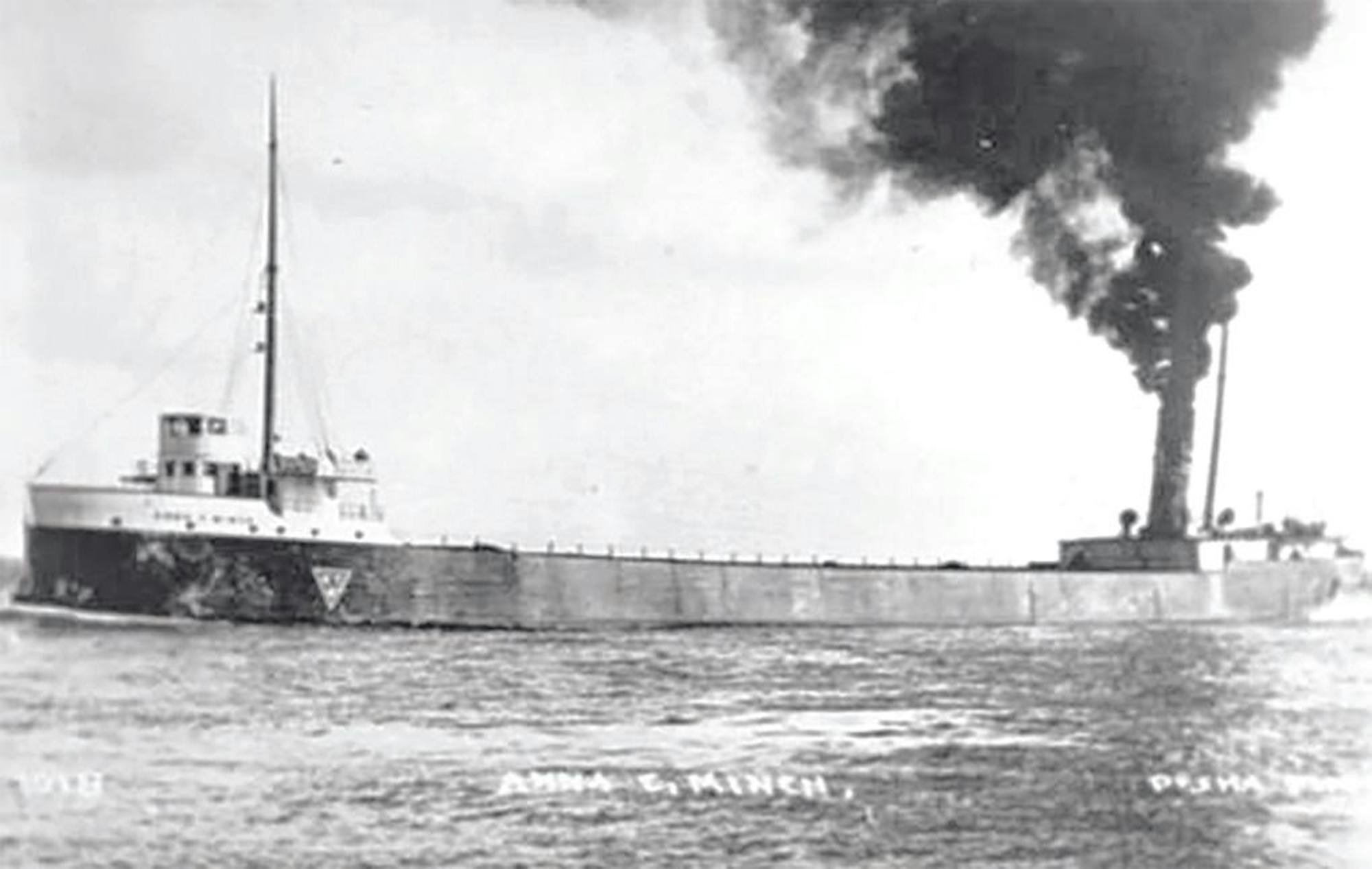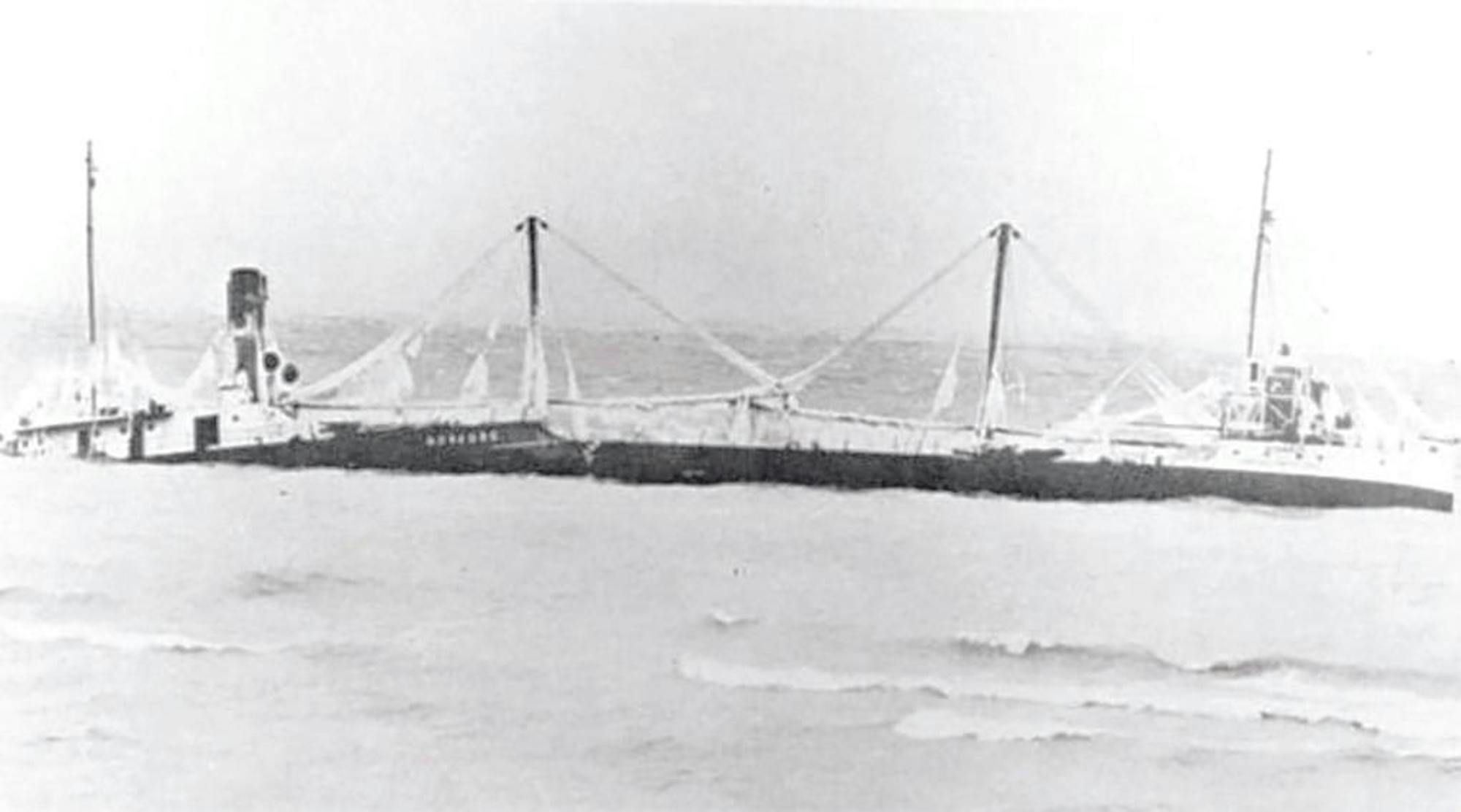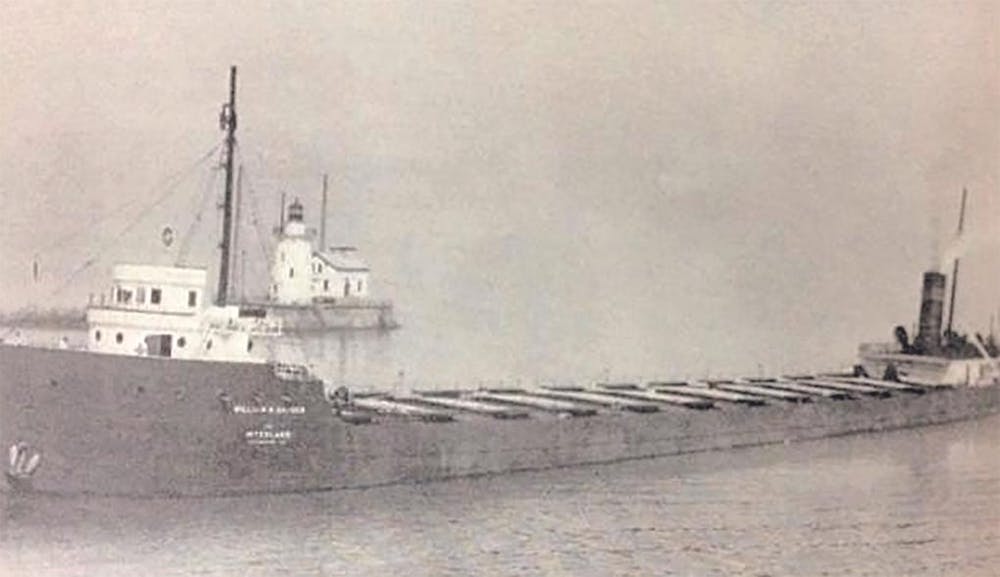One of the worst storms in many years swept across Lake Michigan and the Midwest Monday, Nov. 11, 1940, leaving a path of destruction in its wake and much tragedy in the history of Great Lakes shipping. Four ships went down with all hands; five others were aground. It was estimated that approximately 120 seamen lost their lives on Lake Michigan as a result of the storm. The following three vessels were among the ships that were lost in the area:
SS William B. Davock was a 420-foot steel bulk freight steamer built in 1907 by the Great Lakes Engineering Works at St. Clair, MI, for the Vulcan Steamship Company. She was operated by Vulcan Steamship from 1907-15 in the Great Lakes coal, iron ore, grain and stone trades. In 1915, the ship ran under the Interlake Steamship Company. While laid up during the winter of 1922-23, she was reconstructed and updated. She then returned to the trade pattern of coal carried to ports from Lake Erie and iron ore carried from Lake Superior ports to the steel mills of Lake Erie and Lake Michigan.
This route was forever changed Nov. 11, 1940, when a ferocious storm swept the lakes late that Monday afternoon. Considered to be the worst storm to that point on Lake Michigan, it saw 75 mile per hour winds and rain that turned to snow and twenty-foot waves. Several vessels on Lake Michigan were caught with little warning.
The Davock was making her way down the lake with coal for Chicago, and became overwhelmed at the height of the storm, succumbed to the intense wind and waves and slipped to her final resting place about 200 feet below the surface five miles out from Little Sable Point between Ludington and Pentwater. None of the 32 hands survived.
A survey of the wreck years later revealed the cause of the ship’s loss was a broken rudder, which jammed against the propeller breaking off one or more blades, rendering the vessel without steering or propulsion. This allowed the boat to fall into the trough of the waves, where it was swamped and perhaps capsized before sinking.


SS Anna C. Minch, a 380-foot bulk carrier, was built by the American Ship Building Company of Cleveland, OH in 1903 and operated by the Kinsman Transit Company of Cleveland from 1903-26. It was then acquired by the Western Navigation Company, Fort William, Ontario, Canada. She was carrying a load of hardwood lumber, when she sank in Lake Michigan during the Nov. 11 storm near Ludington.
At the time, it was the only Great Lakes bulk carrier bearing a female moniker. The ship was outdated in some ways and did not have a radio; however, it was still considered seaworthy 38 years after it was built.
The vessel broke in two pieces and her wreckage was spread over a large area. She is located about one and a half miles south of Pentwater, not far from the wreckage of the William B. Davock, which went down in the same storm. Captain Donald Kennedy and his 21-member Canadian crew all perished. Two bodies were never recovered.
There is a monument erected to the crews of the Davock and the Minch and three other seamen that can be found in the Lakeview Cemetery in Ludington.

The Novadoc, a 253-foot steel freighter, was built in 1928 at Wallsend-on-Tyne, Great Britain by Swan, Hunter & Wigham Richardson, Ltd. When she was lost, she was owned by Peterson Steamships, Ltd. of Fort William, Ontario, Canada.
Bound from Chicago to Port Alfred, Quebec, Canada, Captain Donald Steip stayed close to the eastern shore of Lake Michigan since the wind was southeast. But the wind shifted to the southwest and began to increase dramatically. As the captain was attempting to turn the huge freighter into the wind, it became trapped in the trough of the sea and began to roll. Waves began to wash over her decks as the crew peered out toward shore, barely able to make out the Little Sable Lighthouse.
Wallowing in the waves, her pilothouse windows were smashed out and she began taking on water. About 7 p.m. that evening, the Novadoc ran aground on the sandbars at Juniper Beach near Pentwater, breaking in two. Waves continued to pound the ship and soak the crew.
Most of the crew spent the night huddled in the forward captain’s cabin and office while another group was trapped near the stern. At daybreak it was noticed the lifeboats had been washed away. About this time the vessel was spotted by those on shore and a crowd of hundreds gathered over the next few hours. The vessel was between 500-700 feet offshore but could not be reached by boat or line.
On board the vessel, the crew began burning furniture to stay warm while day turned into night. The next morning, the captain ventured to the aft end of the boat to see who remained. It was discovered that two men – the vessel’s cooks – had been washed overboard.
During this whole ordeal, the U.S. Coast Guard refused to come to the aid of the stricken vessel due to the severity of the storm. Finally, after 36 hours of waiting, a little fishing boat called The Three Brothers, manned by Captain Clyde Cross, Gustav Fisher and Joe Fountain, decided to take matters into their own hands. Cross steered the little fishing tug as close to the stranded ship as possible, rigged up a breeches buoy and was able to rescue the crew of 17 men.
The bell from the Novadoc has since been retrieved from the ship and presented to the Pentwater Historical Society in memory of Capt. Cross and his crew for their heroism. It can be seen at the Pentwater Historical Society Museum along with other items from the Novadoc.











